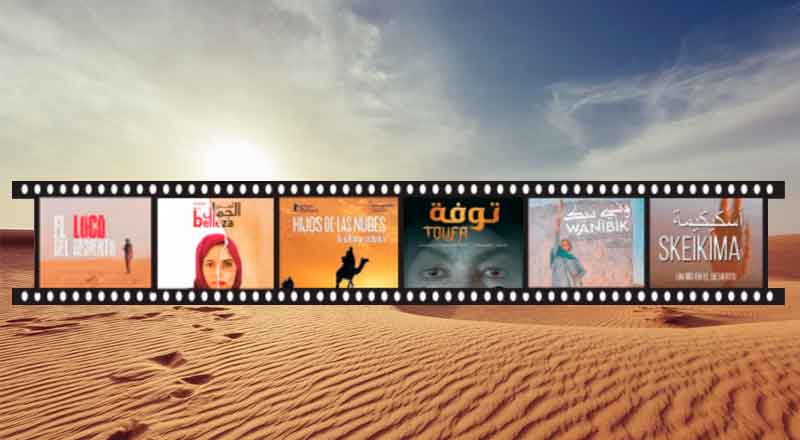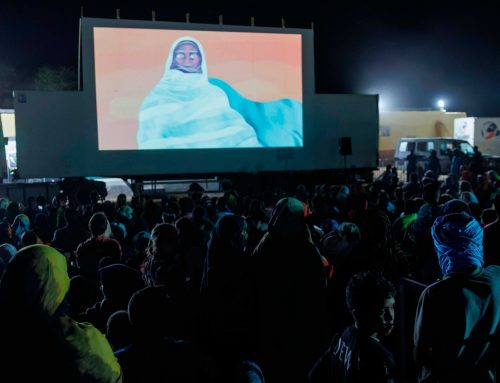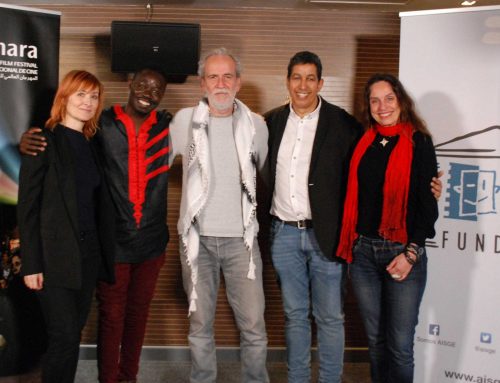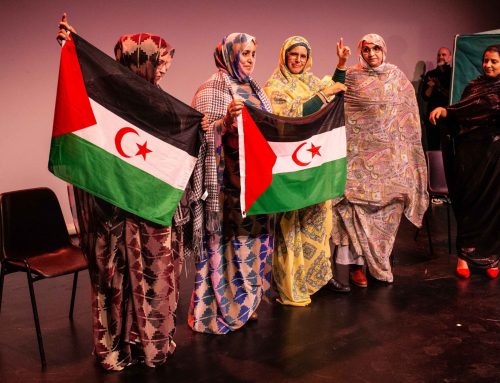The University Cinema of the University of Panama and the Embassy of the Sahrawi Arab Democratic Republic (SADR) in Panama organize a film sample about the SADR, forming the largest FiSahara window projected so far. In collaboration with FiSahara, Nomads HRC and the Panamanian Solidarity Association with the Sahrawi Cause (APOCASA), from April 24 to 28, almost twenty of Sahrawi theme films or made by directors trained at the Audiovisual Training School Abidin Kaid Saleh, located in the Bojador refugee population camp, will be screened at the University Cinema.
April 24 – Conflict History

3:00 pm – Western Sahara: Memories of Resistance I
(Spain, 2022) by Yolanda Prieto / TV-style doc 29′
On 26 February 1976, the last soldiers of the Spanish Legion abandoned Western Sahara, leaving the Sahrawi people defenceless against Morocco’s military invasion of their territory. The next day, on 27 February, the Polisario Front proclaimed the constitution of the Sahrawi Arab Democratic Republic (SADR) while in exile in Algeria, its refugee host land. Today, more than 45 years later, the Sahrawi people find themselves scattered between three different locations: the refugee camps in Algeria, the Moroccan-occupied territories, and the international diaspora, as the Spanish state, the de jure administering power, remains indifferent, and the International Community complicit. On 20 November 2020, Morocco’s violation of the ceasefire in the Guerguerat buffer strip led to the outbreak of a new and ongoing armed conflict against the Polisario Front. This documentary aims to help shed light on this historical conflict, and to counter the silence of the majority of media outlets on the matter. A story built on the memories of its protagonists: the Sahrawi women and men, the scholars, and the defenders of Western Sahara’s right to self-determination.
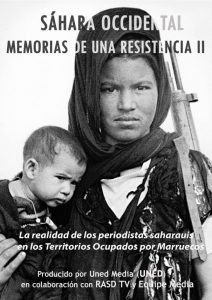
5:00 pm – Western Sahara: Memories of Resistance II
(Spain, 2022) by Yolanda Prieto / TV-style doc 38′
The Spanish Government’s Position embracing Morocco’s Autonomy Plan for Western Sahara brought the Sahrawi people’ s case back in the spotlight, as a geopolitical actor without a voice, without a past and without a memory. This documentary delves into the reality in which the Sahrawi journalists are operating in the Territories Occupied by Morocco and it opens a polyphonic, and rigorous debate how silence and oblivion have been constructed around the conflict of Western Sahara.
7:00 pm – OPENNING
April 25 – Sahrawis short selection made by film students
(3:00-5:00 pm)
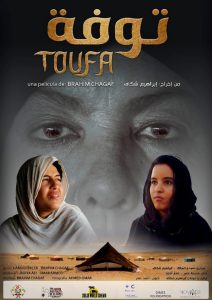
Toufa
(Western Sahara, 2020) by Brahim Chagaf / Fiction 30′
Toufa recreates the beginnings of the Sahrawi population’s arrival in the Hamada’s arid desert. This short film tells of the suffering of three generations of Saharan women, who through their effort and sacrifice wounds of the war were healed upon their arrival in the inhospitable territory of this part of southern Algeria.
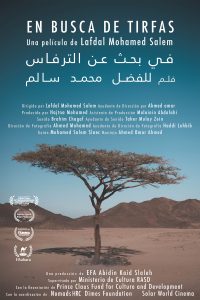
Searching for Tirfas
(Western Sahara, 2020) by Lafdal Mohamed Salem / Fiction 14′
When you are born in refugee camps, you grow up dreaming that one day you will live in your homeland, and as time goes on, this never goes beyond being a dream… You become the father of a family, and at that moment, you have to face life to achieve self-reliance. You fight to reach your dreams and face the daily obstacles, between both worlds, you end up doing what you never thought to do.

The Price of Beauty
(Western Sahara, 2020) by Ahmed Mohamed Lamin / Ficción 7′
This short film denounces the standards of beauty which Sahrawi women are subjected to, who use whitening products to lighten their skin, ignoring the risks that they may later incur.

Inminent Danger
(Western Sahara, 2022) by Azza Mohamed Moulud / Fiction 11′
This short film addresses the problems surrounding the appearance of narcotics in the Sahrawi refugee camps in Tindouf. These drugs are beginning to be sold in kiosks and areas close to schools, causing addictions to chemical substances among the youth.
April 25 – Repression in the occupied territories by Morocco (7:00 pm)
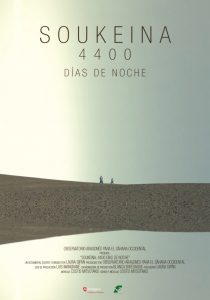
Soukeina, 4400 days of night
(Spain, 2017) by Laura Sipán / Documentary 28′
After the military occupation of Western Sahara in 1976, Moroccan government attacked the civil population with hard repression, forcing hundreds of Saharan people to “disappear” in clandestine jails. An invisible and slow death was the only horizon. However, some prisoners were able to survive after suffering their own “extinction” for more tan 10 years, ripped from their families, suffering torture, in total isolation. When they finally were released, their known world had changed radically.
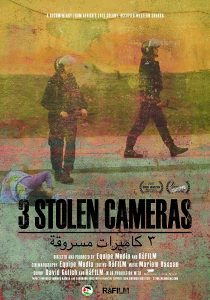
3 Stolen Cameras
(Western Sahara, 2017) by RäFilm and Equipe Media / Documentary 17′
The members of video activist group Equipe Media fight to keep their cameras. They use them to document the Moroccan kingdoms’ violations of human rights in Africa’s last colony. No journalists are allowed to enter occupied Western Sahara. The only images that find their way out of the territory are the ones Equipe Media manages to film in secret, hiding on roof tops and risking severe consequences. They film peaceful demonstrations being attacked by police and military, and injuries and stories from victims of police brutality. This is a story about breaking an absolute censorship with unique footage from an area where the Moroccan authorities have managed to implement a near total media blockade.
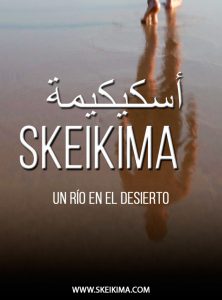
Skeikima
(Spain, 2017) by R. Larrosa and M. Ovejero / Documentary 15′
How would you claim your identity in a hostile land? How could you live under harassment and repression? How would you make your voice break through the walls of silence? Sahrawi young people living at the Occupied Territories (O.T) are required to study at the occupying country. But a river resonates all over the desert…
April 26 – Sahrawi resistance of refugees in Algeria (3:00-5:00 pm)
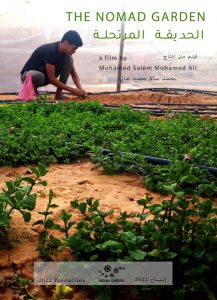
The Nomad Garden
(Western Sahara, 2022) by M. Salem Mohamed Ali. / Documentary 8′
The Nomad Garden is an ode to the impossible. A young Sahrawi refugee shows how he grows organic vegetables and herbs in one of the most inhospitable places on Earth, overcoming challenges like the lack of water, extreme temperatures and a barren soil.
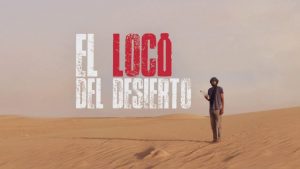
The Madman of the Desert
(Spain, 2018) by Julieta Cherep / Documentary 30′
This documentary tells the story of Tateh Lehbib, a Saharawi refugee who after studying Renewable Energy at the University of Algiers and then a master’s degree in energy efficiency at the University of Las Palmas de Gran Canaria, has designed a type of shelter made with plastic bottles filled with sand. This innovative circular shelter aims to improve the harsh living conditions experienced in the desert in Tindouf, reducing internal temperature and offering a better resistance to sandstorm, while having an eco-friendly purpose by reusing plastic bottles.
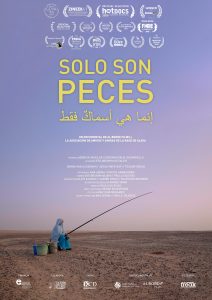
They’re Just Fish
(Spain, 2019) by Ana Serna and Paula Iglesias. / Documentary 17′
Teslem, Dehba and Jadija work on a fish farm in the Sahrawi refugee camps. Where? Algeria, in the middle of the desert and far from their homeland. There’s no sea there, but they do have fish.
April 26 – Wall of shame (7:00 pm)
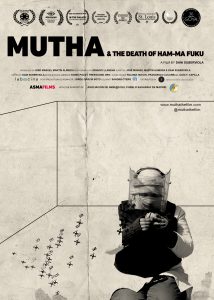
Mutha & the death of Hamma-Fuku
(Spain, 2021) de Dani Suberviola. / Documentary 25′
Mutha searches for antipersonnel mines in the Western Sahara Desert. Every day, she faces death. Every exploded landmine reminds her that she has saved a life, but also that a mine marked her destiny. She is not alone between the fire and the sand. At her side, a presence paralyzes her, but also forces her to keep searching.

Mines Hurt
(Spain, 2019) by Isidro López Aparicio. / Documentary 25′
This documentary deals with the great injustice and pain caused by anti-personnel mines and demands the urgent need for all the countries involved to sign the demining protocols. The short begins with a 24-hour isolation carried out by the author in a hole/crater in the middle of the desert to empathy with the Saharawi people, from there progressively through their commitment and coexisting for getting close to the reality of the victims of antipersonnel mines and their everyday live. Denunciations and wishes of this people who have suffered a hard exile are verbalized. In parallel, the author is interviewing, listening, sharing and designing an ingenuity that he is building to exploit the mines. The melphas (costume of the Sahrawi woman) make up the sail that moves the wheels that trace with phosphate powder the path with the word FREE and end up exploiting the mine, to show the inhuman damage it cause. A call for peoples to sign demining protocols urgently.
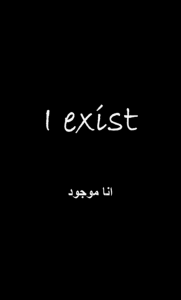
I Exist
(Algeria, 2015) by Mohamed Mhamdi / Fiction 5′
Solidarity in the eyes of Sahrauis’s children.
April 27 – Special activity for dance day in colaboration with the Culture Department of the University of Panama (3:00-5:00 pm)
7:00 pm
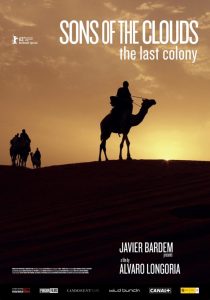
Sons of the clouds, the last colony
(Spain, 2012) by Álvaro Longoria. / Documentary 79′
Ever since he took part in a film event in Western Sahara Spanish actor Javier Bardem has championed the rights of the population of this former Spanish colony. The documentary HIJOS DE LAS NUBES is one of the results of his engagement.The year 1975 marked the end of Franco´s dictatorship. In the same year, the Moroccan king ordered the ‘green march’ in which 350,000 civilians took part in order to take possession of the land by peaceful means. However, this supposedlynonviolent‘green march’ has given rise to repression, war, ethnic cleansing and exile and, to this day, Morocco categorically refuses to call a referendum regarding the status of this region.HIJOS DE LAS NUBES describes the lives of the Sahrawi people who, often forced into exile, vacillate between desperation and militancy. This documentary, which claims that the Arab Spring protests of spring 2010 began in West Sahara, also showshoweconomic considerations have prevented the United States and France from promoting the self-determination of the region’s indigenous people. HIJOS DE LAS NUBES also demonstrates how one individual´s dedication can sometimes be a powerful weaponagainsthopelessness and stasis.
April 28
3:00 pm

Cartel de la película ‘Wanibik’.
Wanibik: The people who live in front of their land
(Algeria, 2022) by Rabah Slimani./ Documentary 95′
After the resumption of the war in Western Sahara against the Moroccan occupiers, a group of cinema students from Sahrawi refugee camps cinema school are making their graduation film. They choose the wall of shame as subject of their film.
5:00 pm
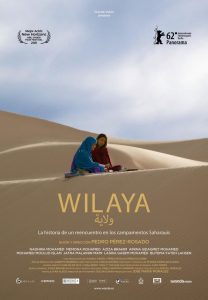
Wilaya
(Spain, 2012) by Pedro Pérez Rosado. / Fiction 88′
After 16 years living in Spain and never having been back to visit, Fatima returns to the Wilaya of Smara after her mother’s death. Awaiting her are her brother Jatri, who will soon be a father, and her disabled sister Hayat. The clash betweenOccidental and Saharaui cultures will be inevitable but Fatimetu’s voyage will not only bring her closer to her roots but make her discover her true identity.WILAYA is told against the true backdrop of the Saharaui Conflict: 150.000 people with no passport and no country to call their own. They live in exile and a legal limbo in the toughest desert in the world that acts as their natural prison.
7:00 pm

Life is waiting: Referendum and Resistance in Western Sahara
(USA, 2015) by Iara Lee / Documentary 59′
More than four decades after its people were promised freedom by departing Spanish rulers, the Western Sahara remains Africa’s last colony. While a UN-brokered ceasefire put an end to armed hostilities in the territory in 1991, the Sahrawi people have continued to live under the Moroccan armed forces’ oppressive occupation, and what peace exists in the area is fragile at best. Tens of thousands of Sahrawis have fled to neighboring Algeria, where over 125,000 refugees still live in camps that were intended to be temporary. In spite of these difficulties, a new movement, with youth at its center, is rising to challenge human rights abuses and to demand the long-promised referendum on freedom. Today’s young generation is deploying creative nonviolent resistance for the cause of self-determination. In doing so, they’ve had to persevere against a torrent of conflicting forces. While risking torture and disappearance at the hands of Moroccan authorities, they’re also pushing back against those who have lost patience with the international community and are ready to launch another guerrilla war.

